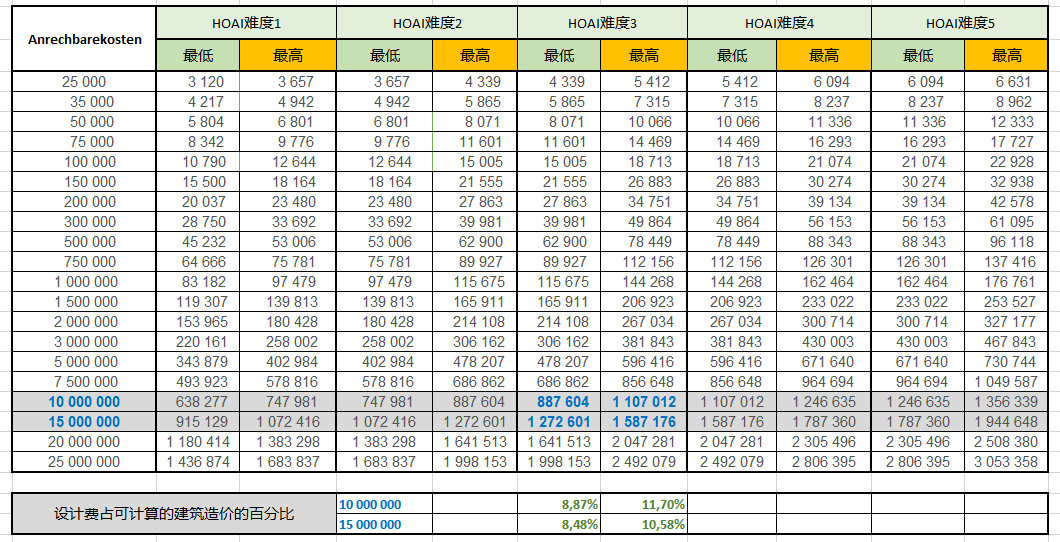Besides feelings, we have to talk about money
. 
Ji Cheng (ID: jicheng-0102) original author Duan Chenguang editor Xiao Qiling saw a piece of news earlier last year
. 
The general office of the Ministry of housing and urban rural development approved the request for instructions on pilot work of architect responsibility system issued by Beijing Municipal Commission of planning and natural resources, and agreed to carry out pilot work of architect responsibility system in Beijing
. 
It is required to broaden the service scope of architects, improve the construction management mode and management system matched with the responsibility system of architects, and cultivate a group of architects with international vision and national confidence
. 
Beijing tries out the responsibility system of architects to select and train “engineers with five understandings”, that is, to understand design, cost, material, contract and BIM
. 
We should make up for the short board of ability, strengthen the architect’s ability of overall planning of professional design, comprehensive organization and coordination, and enhance the control ability of materials, equipment, construction technology and project cost
. 
In particular, through the significant improvement of project quality and quality, it can bring real value contributions to the owners, such as management and cost saving, form the incentive compatibility between the owners and architects, and jointly promote the architect responsibility system
. 
In essence, it is only when development meets resistance that there will be impetus for change
. 
Especially the reform of the system
. 
The topic of architect responsibility system has been pushed to the front stage
.
I think the main reason is that there is a bottleneck in the construction industry and it is time to seize the stock
.
One belt, one road, is the new development demand for China’s architects and engineers to enhance their international competitiveness
.
At present, the existing laws obviously limit this new development demand
.
The “building law” implemented in 1997 stipulates that the product information cannot be marked in the construction drawings, which fundamentally limits the designers’ understanding of the cost and materials, and increases the communication and calculation costs in the whole construction process
.
In the long run, the result is that architects are about equal to those who draw drawings, and the last thing they sell is drawings
.
The design institute is only responsible for the design, and the construction party is responsible for the construction according to the drawings
.
Once the drawings are completed, no one cares about the work on the construction site, and the high turnover starts the next project immediately
.
The second resistance is the lack of design fee charging standard
.
Why is the designer responsible for the whole project with an annual salary of more than 100000 yuan or 200000 yuan? Why does the design institute take the design fee to participate in Party A’s organization, cost, procurement, on-site supervision and other things in the general contract, and also bear the major responsibility risk? In the current charging standard of class II expenses in China, the relevant standard of architect responsibility system is missing, and there is no effective legal basis
.
This core issue involving money urgently needs to be solved
.
However, it is not easy to formulate a complete legal basis out of thin air
.
The formulation and improvement of the whole system need to go through a long process of local practice and constant feedback and correction, and finally large-scale promotion
.
Therefore, we want to introduce the relevant systems of countries that have implemented the responsibility system of architects for a long time
.
German architect responsibility system has a history of several decades
.
The scope of architect’s practice covers the whole process of planning, design, cost management, and contract management (including bidding agency and construction management)
.
The architect is responsible for the final construction products, and the architect has control over design, materials, construction, etc
.
I have a tutor of a doctor friend who wants him to translate and annotate the legal basis for calculating design fees in Germany
.
After he expressed the idea of cooperation with the tutor in Germany, he was rejected by the tutor in Germany
.
It seems that laws and regulations have no high-tech content, but they are indeed the distillation of a country’s many years of practical experience in this industry and the summary of the experience and wisdom of countless practitioners
.
It is the legal basis for the parties involved to dispute their interests
.
How can others give it to us so easily
.
Moreover, the rigid provisions may not be applicable to Chinese land
.
The main purpose of writing this article is to share and discuss with you how to stipulate the architect’s design fee in the current German architectural system and what we can learn from in combination with my work practice in Germany in recent years
.
The design fee is inseparable from the construction cost, which requires a detailed description of din276, which specifies the calculation method of the cost, and Hoai, which specifies the calculation method of the remuneration of architects and engineers at all stages of the whole process after knowing the construction cost
.
01 construction cost in Germany, the core law to define construction cost is din276
.
Its essence can be understood as defining a classification rule according to the whole life cycle of architecture
.
It classifies the expenditure of each stage in the whole construction process in detail
.
Then define the error rate that the cost of each stage should meet
.
The nine construction stages defined in Hoai are also the premise for din276 to clarify and gradually refine the construction cost
.
Din is equivalent to our GB standard
.
Din276 and Hoai have made the following three major classifications
.
These three classifications are always interpenetrated with each other in the process of calculating the construction cost
.
1
.
Hoai divides architecture into nine stages according to its whole life cycle
.
2
.
Din276 divides the construction cost into four stages according to the sequence of projects
.
3
.
Din276 divides buildings into eight cost groups according to the whole life cycle
.
We generally say that the construction cost is 300 and 400
.
Among them, the construction cost group is based on eight major groups, and each cost group is subdivided into three levels in order to meet the requirements of accurate cost with the deepening of the project
.
The subdivision of example 300 cost group is shown in the figure
.
With the above theoretical basis, we will string them together with a specific example
.
For example, in such a project, Party A finds the architect and wants to build a research and development center, whose main function is office
.
Before looking for an architect, Party A already has its own general plan, how many people will work, what functions are needed, and the necessary area of each function
.
Note: This is the start node of building project in Hoai, and the constraint scope of Hoai is after this node
.
If Party A does not know how much area and functions it needs, it also wants to consult the architect
.
It means that architects are also involved in the process of project approval, and the consulting fee at this time is not implemented according to Hoai
.
This stage can be regarded as stage 0
.
The reference regulation is din18205, which was promulgated in 1996
.
It basically copies the international standard iso9699: performance standards in building – checklist for briefing – content of brief for building design
.
At this stage, the consultation fee is freely negotiated
.
Many Party A will ask projektentwicklung to help themselves at this stage
.
Stage 0 is directly proportional to the complexity and scale of the project
.
Back to our example, in the Lp1 phase
.
Party A knows what he wants and gives the assignment and area list to the architect
.
The architect will calculate an investment estimate based on this
.
The calculation principle is very simple, which is the cost of area x unit area
.
The area is already available, and most architects will refer to the data published annually by the German authority bki (baukosten information Zentrum / construction cost information center)
.
This organization publishes a cost list on the market every year
.
Some large construction companies will also use their own database
.
The average unit cost of bki baukosten office building in 2016 is shown in the figure below.
.



